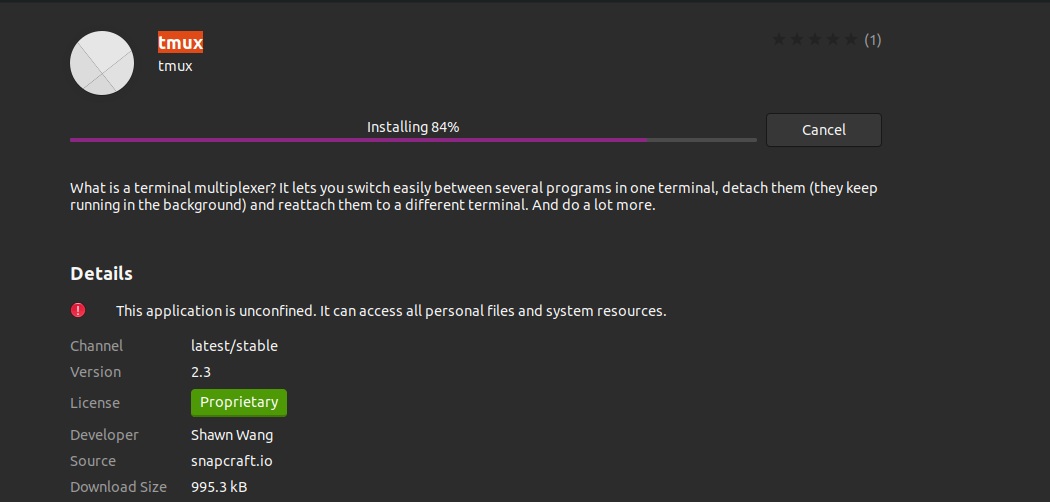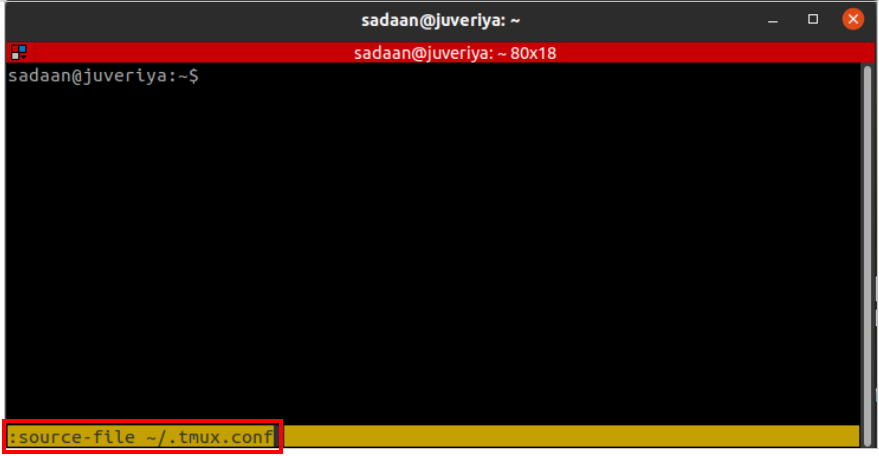In general, when you close an SSH connection, the corresponding remote terminal sessions are also closed. Here comes the Tmux to help as it preserves those sessions when the SSH connection is terminated.
After installing Tmux, you will not find any icon associated with it. It will not appear as a separate application. Instead, we will have to invoke it from the Gnome Terminal itself. We will later see how to do this.
Note: We used the “Ctrl+b” as the prefix. If you configured some other prefix, then replace the command with your prefix in this guide.
What Will We Cover?
In this guide, we will explore how we can install Tmux and, more specifically, “How to reload a Tmux config file.” We will use Ubuntu 20.04 as the base system for this guide. Let us first start with installing Tmux.
Installing Tmux on Ubuntu 20.04
Major operating systems, such as Linux, macOS, and Windows Subsystem for Linux (WSL) provide Tmux software packages from their official repository. So, to install Tmux on Ubuntu 20.04, we can simply use the package manager or the Software center as described below:
1. To install Tmux using package manager, simply run the command:
2. To install Tmux using the Software center, open the Software center, search for Tmux, and click “Install”:
Launching Tmux
Once the Tmux is installed, we will have to use the Gnome terminal to invoke it. One may encounter the following error when trying to run the “tmux” command:
To overcome this error, type “export TERM=xterm” on the terminal and hit enter. Now, again run the “tmux” command and this time, the error should not appear.
Another way is to use the “XTERM” terminal and launch the Tmux from here. This worked on our Ubuntu 20.04 system.
How to Use Tmux
We can use three ways to send commands to a Tmux terminal:
Using the Prefix keys: Tmux uses a combination of keys called prefix keys, which are by default “CTRL+b”. This prefix is followed by one or two more keys which will be interpreted by Tmux for a particular operation. For example, we can detach from a session by using: [Prefix+d].
Using the command mode: To send the commands directly to the Tmux terminal, we must enter the command mode by pressing the prefix keys followed by a colon (:). A command prompt will open up at the bottom of the terminal to enter the Tmux commands.
Using the command line: Tmux commands can also be used from the non-Tmux terminal or shell prompt. These commands are preceded by the “tmux” keyword. We have illustrated this method in the following section.
Reloading a Tmux Config File
When we customize Tmux to suit our needs, we need to reload the config file. Here, we explained three different ways to reload the Tmux config file:
1. Reloading the Tmux config file using the command: “tmux source-file”.
The command format to reload tmux.conf from shell prompt is:
If the file is inside the home directory of the user (as it is usually the case), the command will be:
2. Reloading the Tmux config file using the Tmux command prompt.
We can also use the Tmux command prompt to initiate the reloading work. For this, press “Prefix +:” and then, type the following command in the command prompt:
This will load the config file from inside a running Tmux session.
3. Reloading the Tmux config file by making a prefix and key combination.
We need to modify the Tmux config file frequently, and many people find it too cumbersome to type the “source-file” command repeatedly. Let us create a handy shortcut for this. Open the tmux.conf file with any text editor like nano:
and put the following line in it and reload Tmux config file:
Next time you need to reload the config file, you only enter the prefix followed by “r”.
Conclusion
In this guide, we have learned about the installation of Tmux, its basics, and, more specifically, reloading the Tmux config file. A more detailed explanation of various Tmux operations can be found on the Tmux Man pages or the GitHub page of Tmux. We hope you found this article helpful. Check out the other Linux Hint articles for more tips and information.





